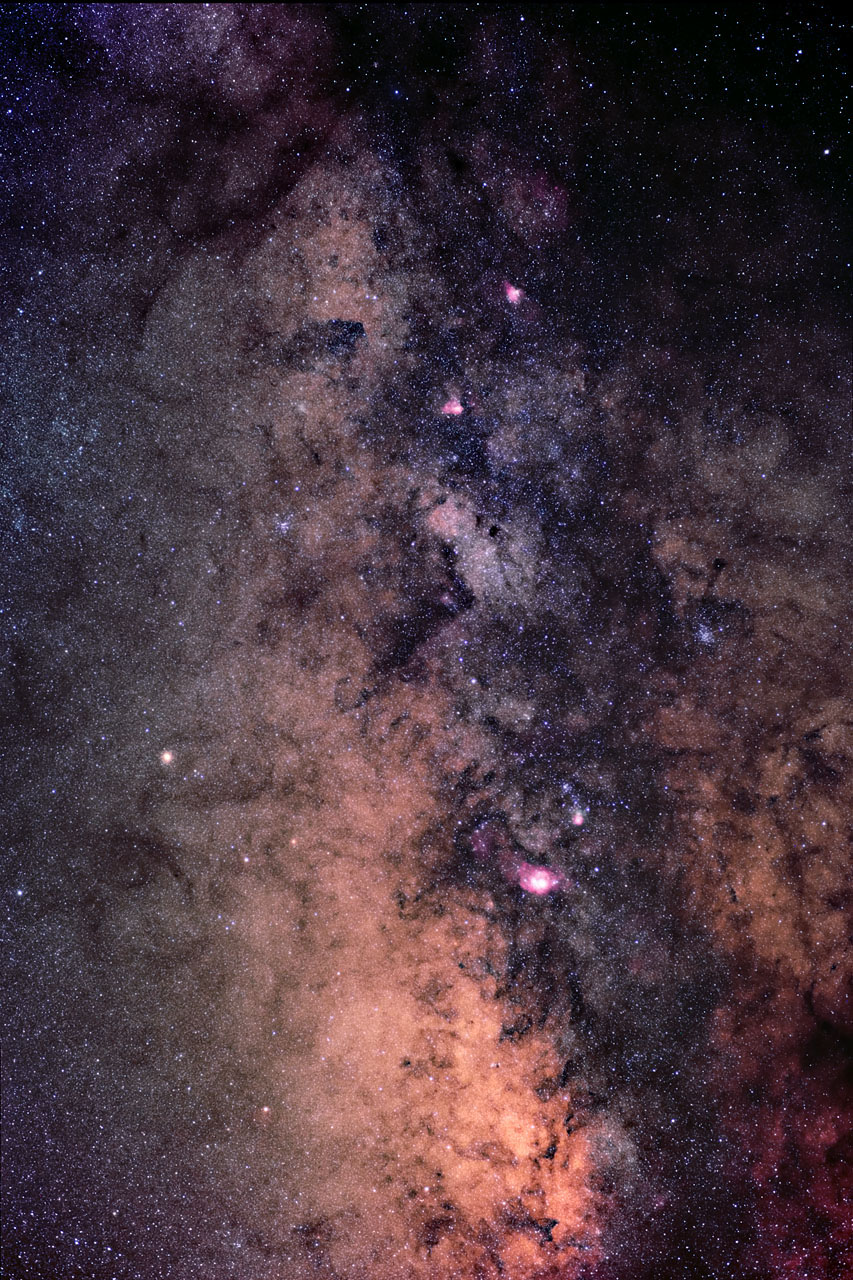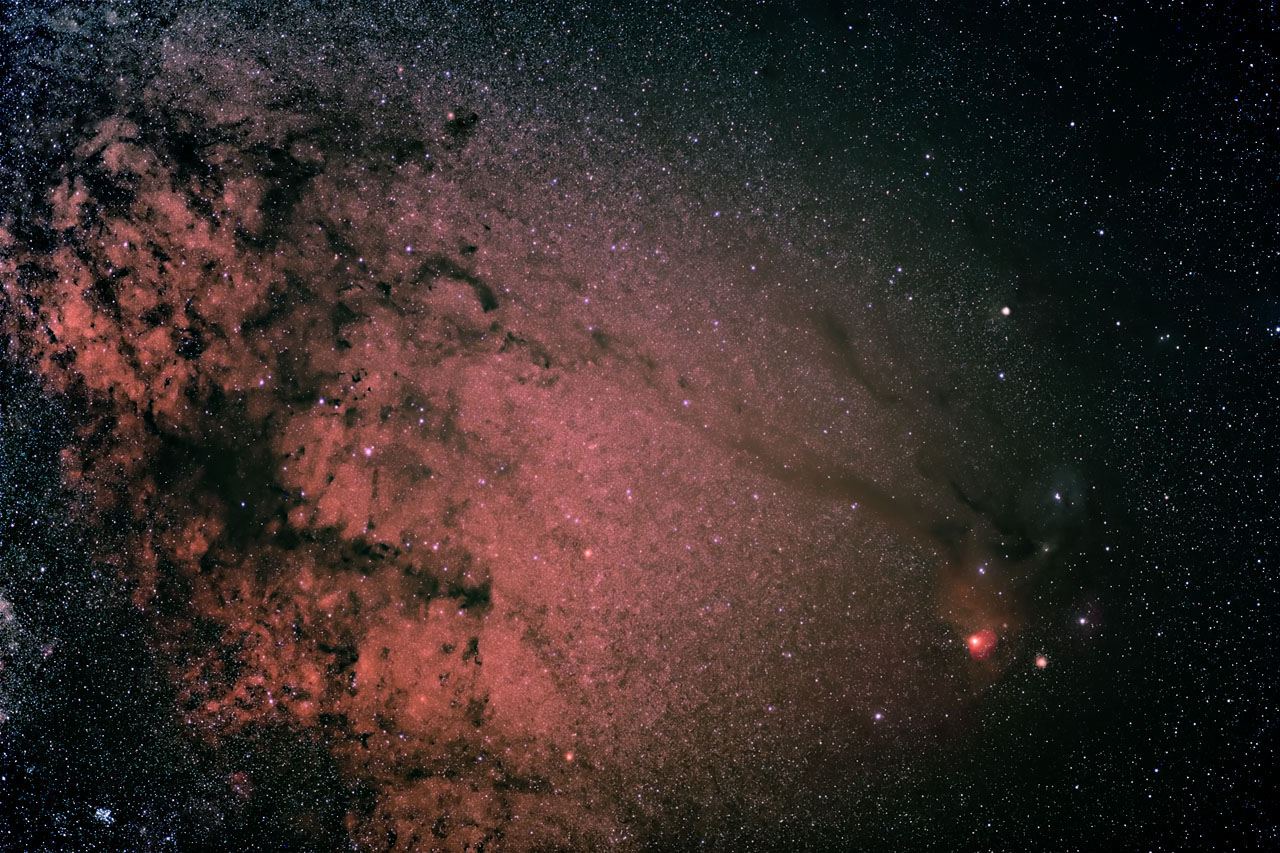Eventually, I’ll have to get serious about using the Canon 6D for astro-photography. Specifically, I’ve only done exposures up to 30 seconds, the maximum the camera will do by itself (without a computer or other device controlling the camera). The results have been mixed (I’m only showing you the ones that worked out well), but with longer exposures and lower ISO settings I think it can produce some spectacular results, both with wide angle lenses and telescopes.
But until then (and “then” could be a while, given the usual weather patterns here this time of year), I’ll share a couple more of the “fun” shots. The shot above is the south end of the Milky Way (from a northern hemisphere perspective). The bright “cloud” at the bottom is just above the Teapot asterism and is sometimes described as the steam coming from the teapot’s spout. A little higher up in the dark rift is a large, bright nebula, the Lagoon (M8) and above that is Trifid (M20). Continuing up the dark rift we see the Swan Nebula (M17) and the Eagle Nebula (M16). There are also numerous star clusters and less bright areas of nebulosity.
Next is a little different view of the Dark Horse Nebula and Antares region:
I posted a similar image a while back (and included it in my 2017 Calendar), but that was taken before I had the camera modified to enhance hydrogen-alpha sensitivity, which is why this version shows a lot more red. In truth, it’s hard to know just how much red is “real”. I toned it down a lot from the original image capture, but that was rather wildly over-exposed in red due to the modification. As in the previous shot, the bright yellow spot just beyond the red dust region (top right) is Saturn, and the bright spot with a lot of red around it is the star Antares. Both of these very bright objects produced a lot of lens flare in the original image. I managed to edit that out around Saturn, but the area around Antares is much more complex, making it difficult to edit. There really is a lot of dust in this area that is lit up by Antares, but most of what you see in red to the right of the star is just lens flare. So I’ll have to shoot this yet again to see if I can eliminate that aberration.

